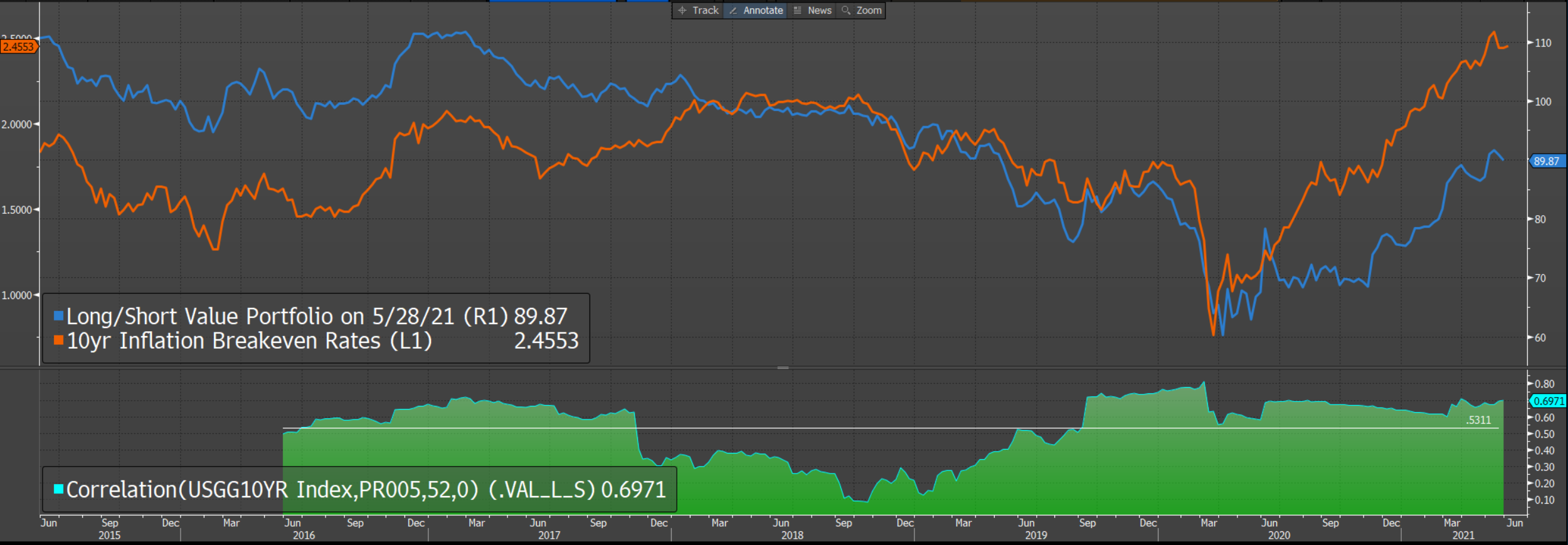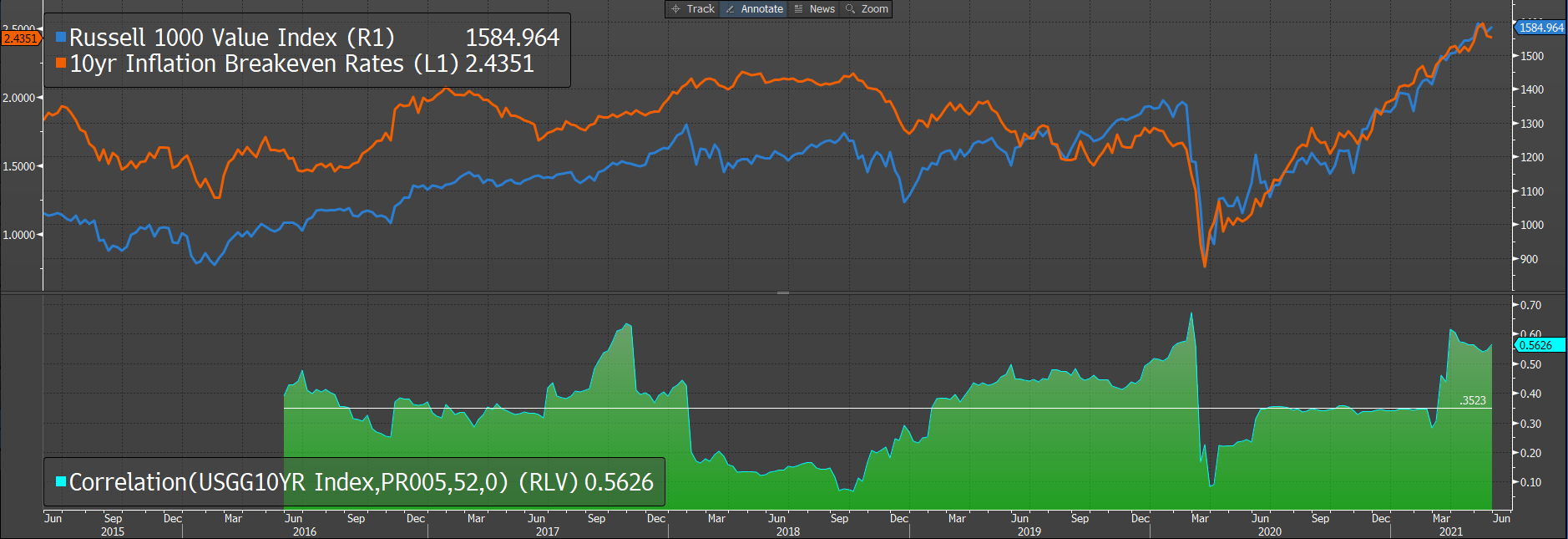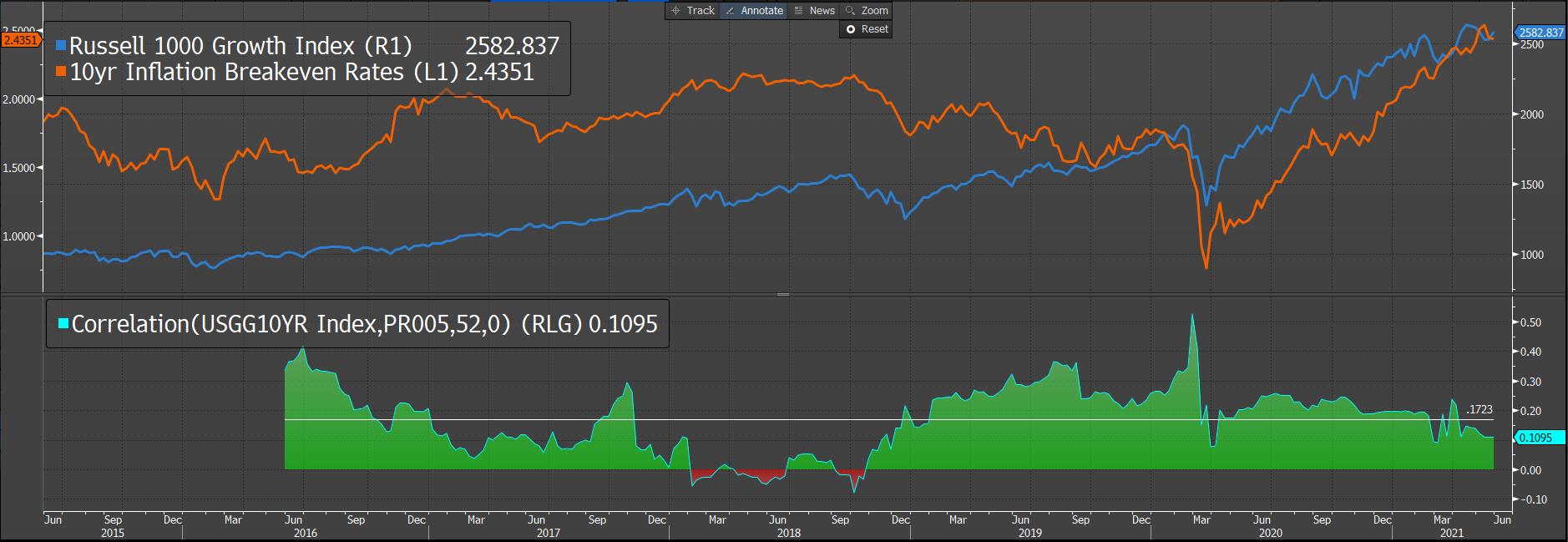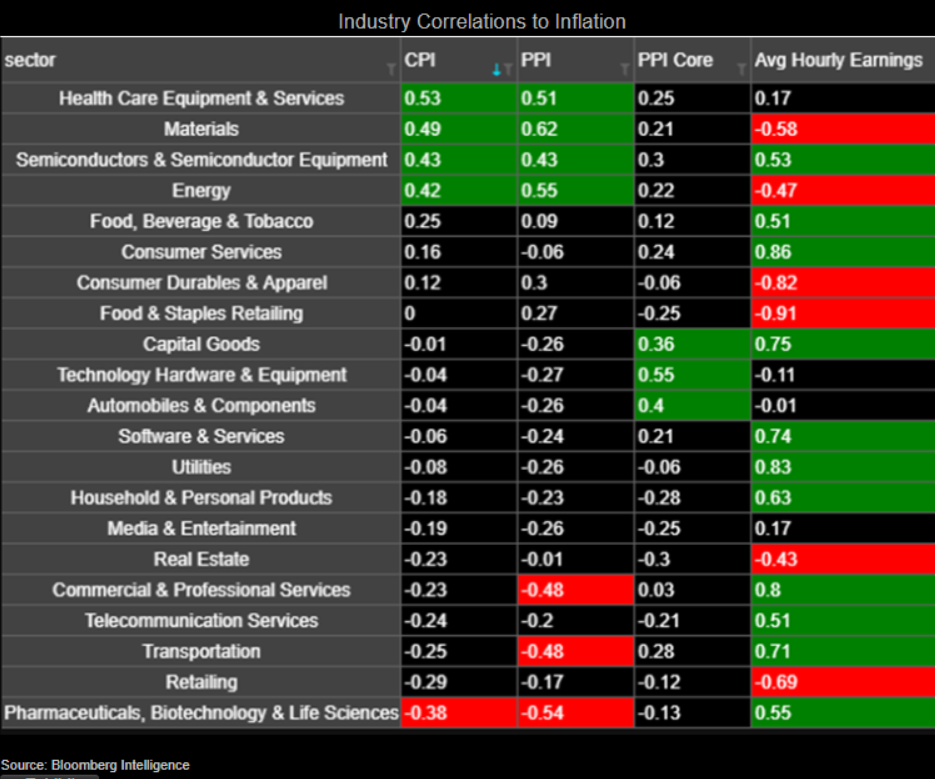Written by: Chris Vandiver | Advisor Asset Management
Generally, when inflations expectations are rising, we see value stocks favored more than growth stocks. This is due to value stocks being seen as a “short-duration” asset. The reasoning has to do with investors using price multiples, such as price/EBITDA (Earnings Before Interest, Taxes, Depreciation, and Amortization), to categorize equities into either growth or value. An equity with a lower price multiple will return an investor’s capital sooner. In an inflationary environment, a dollar today is worth more than a dollar tomorrow, so the market puts a premium on securities that are considered to have a “short duration.” In contrast, the price of growth stocks is derived from future profits which become more discounted as inflation picks up, lowering their price.

Source: Bloomberg | Past performance is not indicative of future results.
The chart above shows the correlation between a long/short value portfolio and 10-year inflation breakeven rates. (The long/short value portfolio consists of going long the top quartile and short the bottom quartile of the S&P 500 based on price/EBITDA, and the 10-year inflation breakeven rate is a measure of what market participants expect inflation to be in the next 10 years.) Over the last five years the long/short value portfolio has had an average correlation of 0.531, but has risen to 0.6971 as of 6/1/2021, which is an incredibly high correlation and boon to value securities if inflation persists.

Source: Bloomberg | Past performance is not indicative of future results.
It’s not just a long/short value portfolio that’s been highly correlated to inflation, the Russell 1000 Value Index has an average five-year correlation of 0.3523 to 10-year breakeven inflation rates; and its correlation year-to-date has jumped up significantly to 0.5626.
In contrast, see the chart below. We ran the same study and found the Russell 1000 Growth Index has a correlation of only 0.1723 to inflation, and it’s fallen year-to-date down to 0.0562. Furthering the case that in an inflationary environment, it’s value rather than growth that benefits.

Source: Bloomberg | Past performance is not indicative of future results.
Switching over to an industry perspective, we found a great table done by Bloomberg Intelligence showing industry correlations to inflation over the past 10 years. The table below shows correlations to the consumer price index, the producer price index, and to average hourly earnings. The correlation to average hourly earnings gives us some insight into if an industry has the potential to be negatively affected by rising labor costs. In this case, rising labor costs might offset any gains energy and material companies experience due to inflation.

Source: Bloomberg | Past performance is not indicative of future results.
We believe there’s no need to fear inflation. When inflation expectations rise, it might be time to start turning the knobs and reallocating into styles and industries that could benefit.
Related: The Four Layers of Inflation

